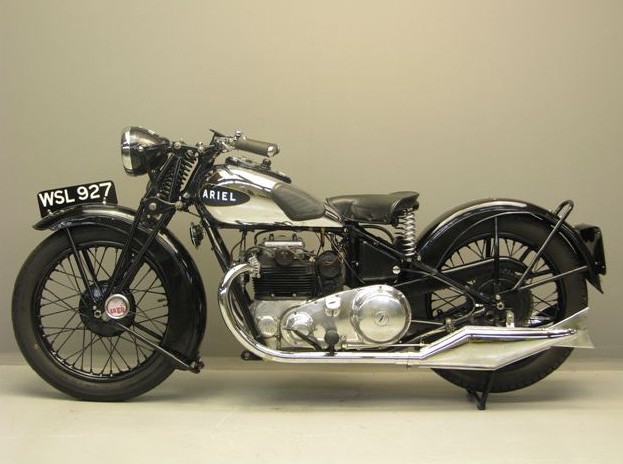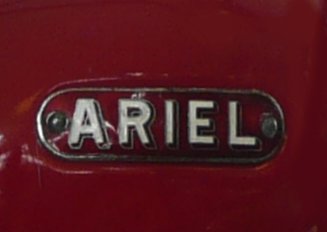The Ariel 4F Square Four 600
Celebrating the oldies – part one
Modern motorcycles offer a whole range of mod cons, better control, increased safety, reliability and cutting-edge design. The current choice on the market is so vast (and so impressive) that it's often all too easy to forget about the time where things were perhaps a bit simpler – where the mechanics of how a motorcycle worked was impressive enough alone to get people hooked. So, when someone asked us recently what the oldest bike was that we stock parts for, we were keen to find out.
With a little bit of research, we managed to come up with a list that celebrates some of the world's most innovative and creative motorcycling ideas. We've found some bikes on our Wemoto stock system that were not only great for their time, but which have influenced and shaped the motorcycle industry considerably, and we're going to be sharing them with you in the coming weeks.
Spirit of the Air
Ariel was originally established as a bicycle producer by James Starley and William Hillman in 1870. It was named as such after the company produced a light-weight bicycle which was referred to as 'the spirit of the air' (Ariel). The company started to manufacture powered tricycles in 1989, producing its first motorcycle in 1902. Ariel also made cars between 1901 and 1925.
The company was bought and run by Components Ltd between 1918 and 1932, when, after going bankrupt, was sold to the owner's son, Jack Sangster and renamed Ariel Motors (J.S.) Ltd. A new factory was set up in Birmingham, and production continued.
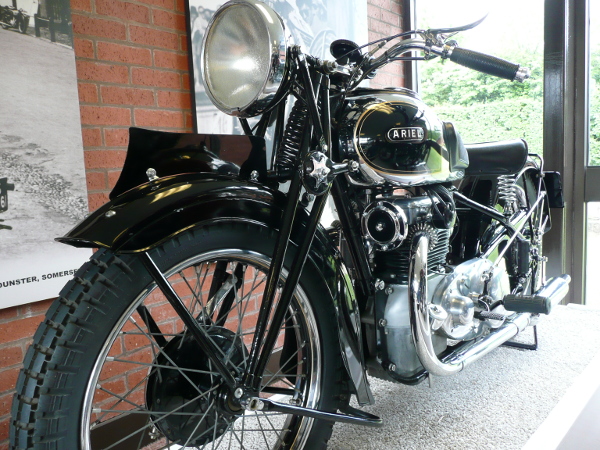
1935
The Original Square Fours
The Ariel Square Four 600, designed by Edward Turner, was one of the first bikes produced under the new ownership and was a newer version of the original 500c Square Four which he had made in 1931. It was Turner who invented the engine which would be arranged in a four-cylinder block or square (hence the name Square Four). He had approached other manufacturers, including BSA, with his design, but was turned down. Sangster was the only person interested, and Turner started working for him, producing the square four 18 months later while working under Val Page.
The Square Four 4F 600 was put on the market for £65.15.0, which is the equivalent of about £4,000 today. It was produced between 1931 and 1936, but was notorious for overheating, so a redesign emerged in 1936 in an attempt to combat this problem, and the 4G 995 cc was born. This also helped to cater for the growing demand for more powerful motorcycles. From 1939 onwards, Ariel's patented Anstey-link plunger rear suspension was an option on the bike and remained so when production restarted (after a break during war time, where Ariel focused on more military models) in 1946.
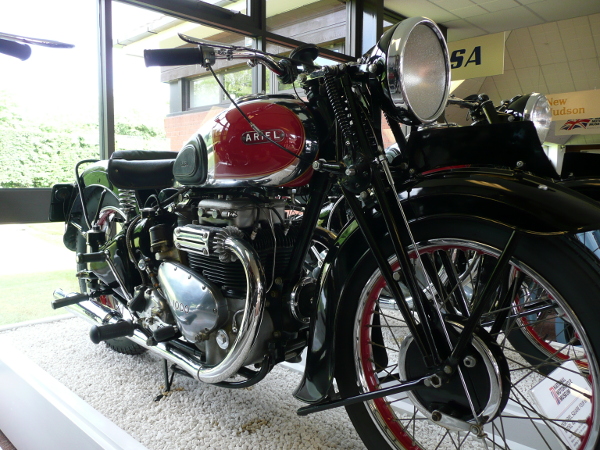
1938
Square Fours Mark 1 and 2
In 1949 came the Mark 1 Square Four, with cast aluminium barrels and heads instead of the previous models' cast iron, which would further improve cooling. In a quest for speed, about 30lb was shaved off of this model, which gave it better handling and acceleration. Advertisements came out, boasting the bike's ability to “rocket from a standstill” with its “spectacular acceleration”, offering buyers “the world's most wonderful motorcycle”.
In 1951, Ariel Motors was sold by Sangster to the Birmingham Small Arms Company Group (BSA), along with Triumph (which he had bought in 1936, a result of the financial success of the Square Four). Sangster joined the BSA board.
In 1953, the Ariel Square Four Mark 2 was released. It was a 997cc model with separate barrels, a redesigned cylinder head and four separate exhaust pipes. The bike, which was capable of 100 mph, went on the market for £336.16.6 (about £8,500 in 2015).
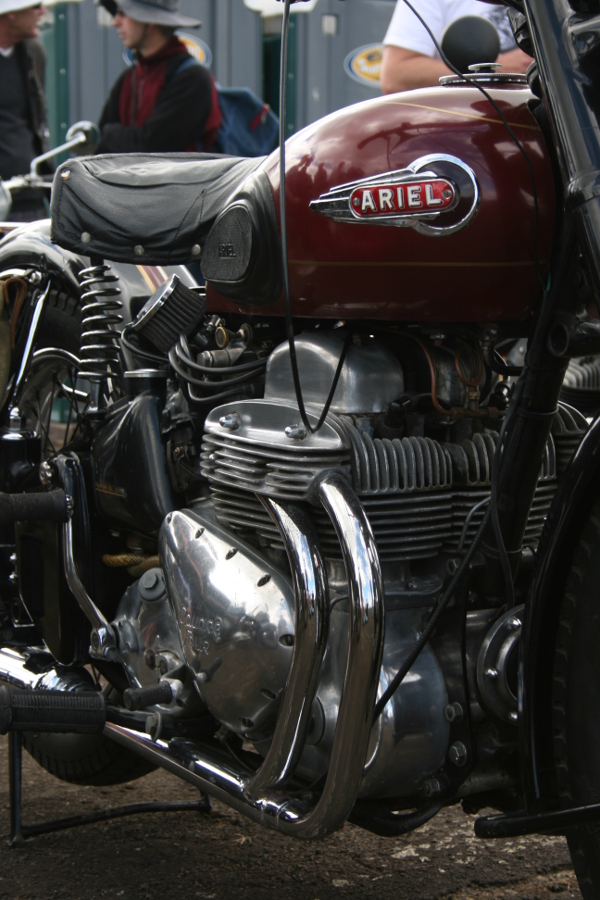
1953
End of an Ariel era
A prototype was created in 1954 of a Mark 3 model, but it failed to reach production. In 1956, Sangster was voted new chairman of the group and swiftly appointed Turner as the head of the automotive division, which covered BSA, Ariel and Triumph. Production of all Ariel's Square Four models ceased in 1959 due to high manufacturing costs and a new trend towards smaller, more modern power units. The Ariel brand ended in 1967, and the last model to be produced was the Ariel 3, a 49cc automatic trike which was by BSA.
The name has since been reused in the automotive industry by Ariel Ltd, who produced a sports car and a new motorcycle, Ariel Ace.
15,639 Ariel Square Fours were produced in total between 1931 and 1958. Today, a 4F Square Four could set you back about £30,000 or more. They have been praised for their reliability and durability, but the unique design of their patented engine works as a reminder of the innovation and creativity of Edward Turner, and thus Ariel.

With sidecar
Ariel 4F Square Four 600 - Specs
Years of production: 1932-1936
Production: 2647 Units
Engine: Double vertical twin, OHC
Capacity: 601cc
Bore & Stroke: 56 x 61mm
Cooling System: Air cooled
Compression Ratio: 6:9:1
Induction: Carburettor
Transmission: 4 speed, Burman
Final Drive: Chain
Front Suspension: Ariel centre spring girders
Rear Suspension: Rigid, spring loaded saddle
Front & Rear Brakes: Drum, 7 inch
Dry Weight: 168kg
Have you ever ridden an Ariel 4F Square Four motorcycle, or have you got an oldie but a goodie motorcycle in your garage? Share your thoughts and images with us at
[email protected].
Comments
23/12/15 Great bike ahead of its time then, so were many other British bikes!
24/12/15 Used to own one of these, fishtail exhaust and all; lovely bike. Rigid rear end took some getting used to though
24/12/15 My grand dad was a frame builder at Ariel
24/12/15 Low CoG, and skinny tyres. Nothing wrong with that!
25/12/15 My now sadly departed father always had two bikes (before marriage and kids) one bike on the road and the other being honed to perfection (he did the final lapping of the valves with silver polish) then swap the bikes over. I know for a fact he would have given up both bikes for the Square Four. This is the man who taught me how to strip and rebuild an engine at the tender age of eight!! RIP Douglas H Markham, my amazing dad.
25/12/15 this would make a brilliant Christmas present
25/12/15 I agree mate
25/12/15 A classic,love it.
25/12/15 Brilliant looking
25/12/15 Ridden the 1000cc one
26/12/15 Great bike as were so many British made bikes but the but like many other British company's they got left behind why Honda flooded the market with cheap 50 .90 .100 cc bikes
26/12/15 My dad had one of these, first one in Wisbech
